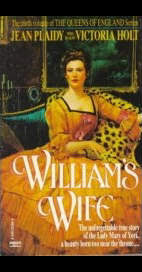I’ve seen this one doing the rounds for a while now, and since I’ve put NaNoWriMo on my 101 Things list, I decided it was time to borrow it.
1. The protagonist will be female (or protagonists, in the event of there being more than one distinct plotline). I’m not familiar enough with the male of the species - or should that be the male species? - to feel confident being in the head of one for a large portion of the book.
2. The aforementioned female/s will be smart. Depending on the time period, not necessarily well-educated; but brainy enough to be a match for even the wiliest of villains.
3. And yes, there will be a villain - or villains. Because there will be a strong mystery element, even if the book is more than just a whodunit. Who killed X? What is Y hiding? Who’s obstructing Z? Why is the house haunted? What really happened two hundred and something years ago? (Or in the case of my NaNoWriMo project, all of the above.)
4. Speaking of haunted houses ... sooner or later, something strange will happen. No made-up worlds or mythologies, just a touch of the weird in the middle of the everyday.
5. The past will be important; either the setting will be wholly or partly historical, or a modern-day heroine will become entangled in something from the past (or even a bit of both). I love history, and a novel is the perfect excuse to do research. Probably European; I’ve never been fond of Australian history, partly from having suffered through too much of it in school, and partly because I prefer my history much older.
6. For my heroines, a nice happy ending heading off into the sunset with Mr. Right is unlikely - or at best, only going to be suggested as a possibility. I have little faith in my ability to create either a convincing love story, or a convincing couple to undergo it. Which leaves me in a NaNoWriMo quandary: I didn’t mean to create a perfectly-matched pair, but I appear to have inadvertently done just that.
7. On the non-romantic front, some at least of the relationships between characters will be complex and tangled, even to the point of trust and mistrust going together. It won’t always be as simple as A likes B, B loathes C.
8. The line between good and bad will be slightly blurred; a bad guy can commit his villainies as much for others as for himself, an essentially good character can scheme endlessly for revenge. (Is it just me, or is this NaNoWriMo project starting to sound a tiny bit ... ambitious?)
9. Although there will be some dark situations (no examples this time - I’m not about to give away the ending!) there will also be plenty of humour. Perhaps not the kind to make you laugh out loud, or even giggle; but enough to lighten the gloom.
10. The title will come from a quotation of some kind. Shakespeare, say.









